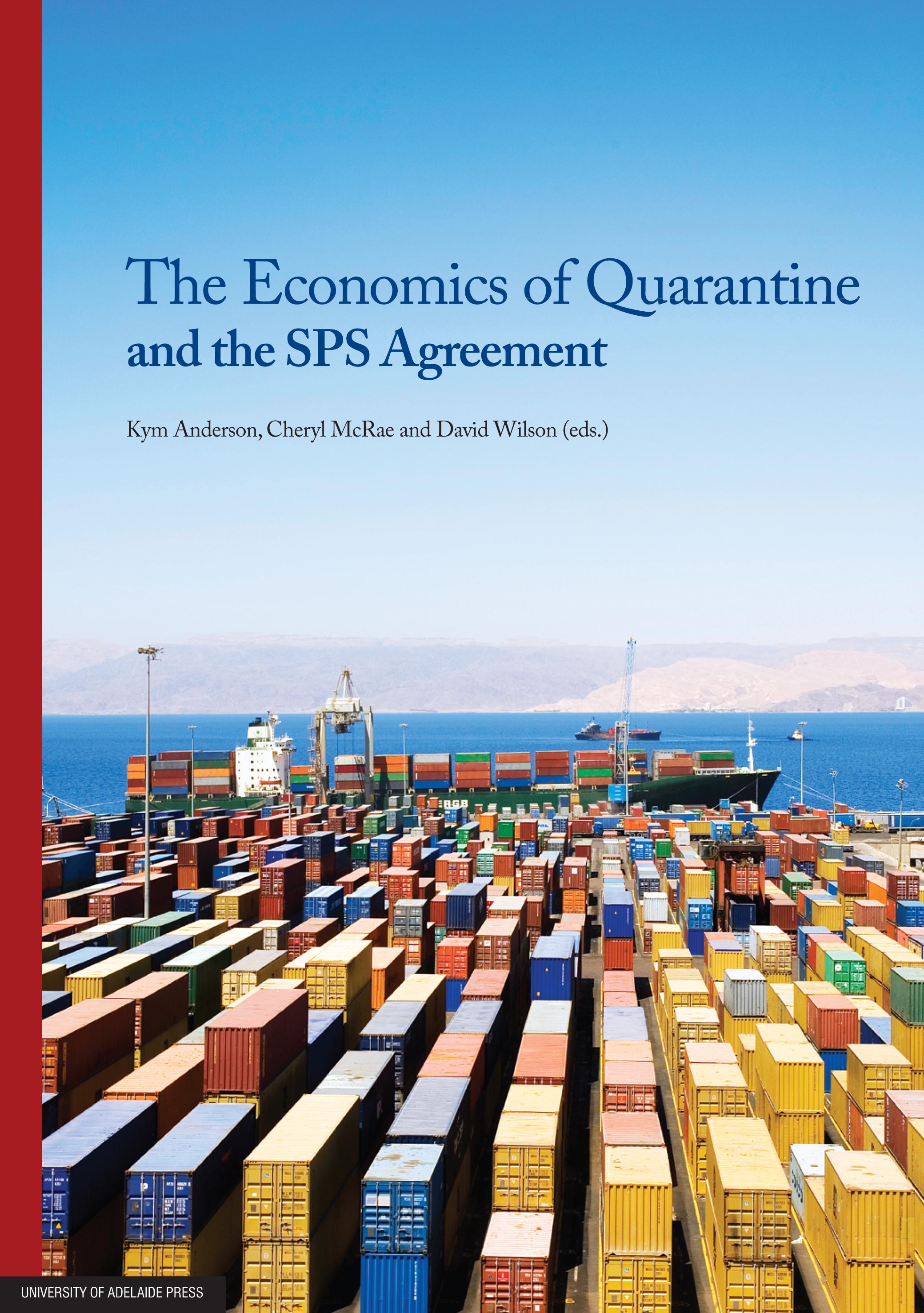The Economics of Quarantine and the SPS Agreement

edited by Kym Anderson, Cheryl McRae and David Wilson
FREE | 2012 | Ebook (PDF) | 978-1-922064-32-5 | 430 pp
-
Chapter details
Preface
Kym Anderson, Cheryl McRae and David Wilson
DOI: https://doi.org/10.1017/UPO9781922064325.0011. Introduction
Kym Anderson, Cheryl McRae and David Wilson
DOI: https://doi.org/10.1017/UPO9781922064325.002PART I — The multilateral rules under WTO
2. The integration of economics into SPS risk management policies: issues and challenges
Donna Roberts
DOI: https://doi.org/10.1017/UPO9781922064325.0033. The analytical foundation of quarantine risk analysis
Mike J. Nunn
DOI: https://doi.org/10.1017/UPO9781922064325.0044. The WTO dispute settlement framework and operation
Gretchen Heimpel Stanton
DOI: https://doi.org/10.1017/UPO9781922064325.0055. Implications of recent SPS dispute settlement cases
Gavin Goh and Andreas Ziegler
DOI: https://doi.org/10.1017/UPO9781922064325.006PART II — The ‘appropriate level of protection’
6. Appropriate level of protection: a European perspective
Spencer Henson
DOI: https://doi.org/10.1017/UPO9781922064325.0077. Appropriate level of protection: an Australian perspective
Digby Gascoine
DOI: https://doi.org/10.1017/UPO9781922064325.0088. Appropriate level of protection: a New Zealand perspective
Hugh R. Bigsby
DOI: https://doi.org/10.1017/UPO9781922064325.0099. Beyond iso-risk to include benefits under the SPS Agreement
Gil Rodriguez, Nico Klijn, Anna Heaney and Stephen Beare
DOI: https://doi.org/10.1017/UPO9781922064325.01010. Integrating import risk and trade benefit analysis
Richard H. Snape and David Orden
DOI: https://doi.org/10.1017/UPO9781922064325.011PART III — Adding more economics to risk analysis
11. Least trade-restrictive SPS policies: an analytic framework is there but questions remain
David Orden, Clare Narrod and Joseph W. Glauber
DOI: https://doi.org/10.1017/UPO9781922064325.01212. Quarantine decision making in Australia
Monika Binder
DOI: https://doi.org/10.1017/UPO9781922064325.01313. Quarantine reform: Australia's recent experience
Carolyn Tanner
DOI: https://doi.org/10.1017/UPO9781922064325.01414. Evaluating economic consequences of livestock diseases: a US perspective
Kenneth W. Forsythe Jr.
DOI: https://doi.org/10.1017/UPO9781922064325.015PART IV — Specific health and environmental risks from trade
15. Measuring the effect of food safety standards on African exports to Europe
Tsunehiro Otsuki, John S. Wilson and Mirvat Sewadeh
DOI: https://doi.org/10.1017/UPO9781922064325.01616. GMOs, the SPS Agreement and the WTO
Kym Anderson and Chantal Pohl Nielsen
DOI: https://doi.org/10.1017/UPO9781922064325.01717. Food safety policy in the WTO era
Sallie James
DOI: https://doi.org/10.1017/UPO9781922064325.01818. Environmental risk evaluation in quarantine decision making
John D. Mumford
DOI: https://doi.org/10.1017/UPO9781922064325.019PART V — Conclusion
19. Summing up
David Robertson
DOI: https://doi.org/10.1017/UPO9781922064325.020
The Uruguay Round of multilateral trade negotiations, culminating in the GATT Secretariat being transformed into the World Trade Organization (WTO) on 1 January 1995, has altered forever the process of quarantine policymaking by national governments.
On the one hand, WTO member countries retain the right to protect the life and health of their people, plants and animals from the risks of hazards such as pests and diseases arising from the importation of goods. On the other hand, the WTO’s Agreement on Sanitary and Phytosanitary Measures (the SPS Agreement) requires that quarantine measures be determined in a manner that is transparent, consistent, scientifically based, and the least trade-restrictive.
This collection resulted from an international workshop funded and organised by Biosecurity Australia, the agency of government responsible for analysing Australia's quarantine import risks and for negotiating multilateral SPS rules and less restrictive access to overseas markets for Australian produce. The workshop, which was held at the Melbourne Business School on 24-25 October 2000, brought together a distinguished group of applied economists and quarantine policy analysts whose focus involves regions as disparate as Europe, North America, Africa, Asia and New Zealand, in addition to Australia.
This work is licenced under a Creative Commons Attribution 3.0 Unported License.

